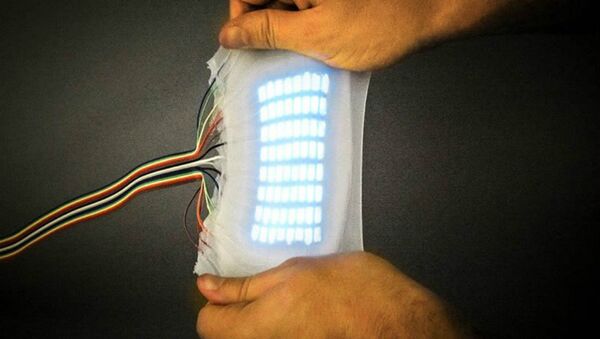The skin is made of a hyper-elastic light-emitting capacitor (HLEC), made of hydrogel electrodes and rubber, that can stretch to more than six times its original size while still emitting light.
"This material can stretch with the body of a soft robot, and that's what our group does," explained Rob Shepherd, assistant professor of mechanical and aerospace engineering and leader of the team that developed the skin.
"It allows robots to change their color, and it also allows displays to change their shape."
"When robots become more and more a part of our lives, the ability for them to have emotional connection with us will be important. So to be able to change their color in response to mood or the tone of the room we believe is going to be important for human-robot interactions," Shepherd said.
In their paper about the invention, published in the March 3 edition of the journal Science, the researchers explained that they took inspiration from the octopus to make the skin, which could lead to advances in health care, transportation, electronic communication and other areas.
Possible uses for the skin include the construction of healthcare robots that can display a patient's temperature and pulse, or react to changes in somebody's condition or mood.



